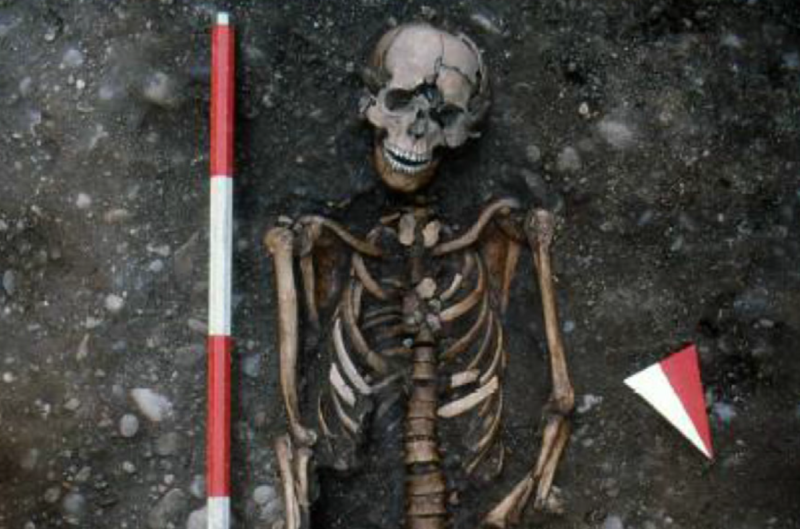
Enlarge / The skeleton was found buried with two buckles which likely once held a shroud in place. (credit: Mazzarelli et al. 2019)
In a medieval Italian cemetery, archaeologists recently exhumed the skeletal remains of a victim of a medieval torture device known as the breaking wheel. University of Milan archaeologist Debora Mazzarelli and her colleagues found the young man (who was probably between 17 and 20 years old when he died) in a medieval cemetery beneath what is now S. Ambrogio Square in Milan. Radiocarbon dating of his bones suggests that he died sometime between 1290 and 1430. His skeleton bears evidence of brutal trauma inflicted around the time of his death, and it appears to match medieval descriptions of execution using the wheel.
Medieval executioners: “This is how we (don’t) roll”
The wheel wasn’t a cutting-edge means of torture and execution, even in the Middle Ages. Greek playwright Aristophanes and later Roman Imperial writers describe torture on the wheel as a way of wringing a confession from a suspect. By the medieval period, the wheel most often turns up in accounts of the lives—and often very graphic deaths—of the Christian saints; the device even became the symbol of one, St. Catherine of Alexandria. But court records also describe its use to punish crimes like murder, rape, and highway robbery.
Although a few accounts of the saints describe them being tied to a large wheel and rolled off a cliff, more historically reliable sources tend to describe convicts being tied, with their arms and legs spread, to the spokes of a wagon wheel while the executioner shattered their limb bones with a heavy maul.
No comments:
Post a Comment